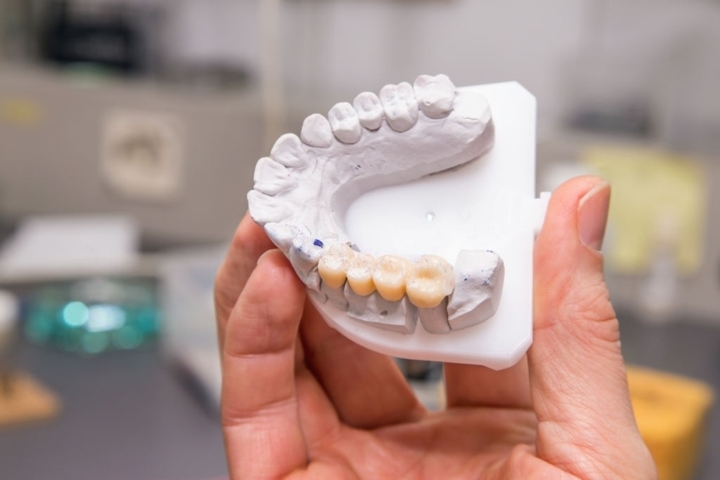
All you need to know before you get a tooth removed!
The overall health and lifestyle get disturbed when a tooth is removed or lost from the oral cavity. People need extractions (removal of the tooth) for several dental health problems such as; tooth decay, gum disease, trauma, insertion of a dental prosthesis, etc.
Extractions are of two types; surgical extractions and non-surgical (simple) extractions.
What is a non-surgical extraction?
The damaged and badly broken tooth in your mouth could be a source of pain and discomfort; the tooth may need to be removed. When the dentist plans to extract the affected tooth under local anesthesia without making any incision (a surgical cut) in your gums; this procedure is a non-surgical extraction. Sutures (resorbable or non-resorbable stitches) are then placed for faster healing of the wound. A dentist will then give you proper detailed instructions for post-operative management of the tooth site for a speedy recovery.
Who needs a non-surgical extraction?
Teeth that are easily accessible and fully erupted in the oral cavity can be removed by a non-surgical extraction such as; baby teeth, loosened teeth due to gum disease, non-restorable tooth damaged by decay, extra or malformed teeth, or for orthodontic treatment.
What is considered a surgical extraction?
A surgical extraction requires an incision to be made around or beneath the affected tooth under local anesthesia for better access to the severely broken down tooth. The aftercare of a surgical extraction is guided by the dentist- oral surgeon which needs to be followed obediently.
Who needs a surgical extraction?
People with teeth that are not easily accessible or fully erupted need a surgical extraction; partially erupted or impacted wisdom teeth, problems in your jaw (TMJ), severely broken down teeth, severely decayed teeth with infection, or during orthodontic treatment for teeth that are stuck beneath the gum and have to be exposed to align them.
How painful is a surgical tooth extraction?
People fear going to a dentist due to the pain they might encounter during the dental treatment, but what about the pain you have in your mouth due to the dental problems? Some pains are physical and some are mental, but the ones that are both are dental. The pain during surgical tooth extraction is managed by anesthesia; patients usually do not feel anything except for slight pressure once they are anesthetized. The pain only gets severe when you do not get the culprit tooth removed at the right time.
Painkillers and antibiotics are given by the dentist to make the pain go away, and the patient gets completely pain-free and comfortable within 5-7 days of a surgical extraction; once the surgical site is healed!
It is important to understand that the sutures (stitches), placed at the extraction site, ensure a faster recovery through wound healing. In the case that the sutures need removal, the ideal time to get them removed is on Day 5 to 7 and it is a completely painless suture removal procedure.
Dr.Shoaib Durrani is your best choice in getting the treatment done as he has ample experience in counseling and making your fear fade away. We, at Durrani’s Dental Clinic, offer sedation and anesthetic options to make you comfortable and pleased. Call us at +92-21-37227441 to book an appointment.
How long does a surgical tooth extraction take?
The duration of any dental treatment depends on the number of teeth and the amount of damage related to each tooth, the more difficult the tooth, the more time needed for surgical tooth extraction.
The important thing to understand here is that once the anesthesia is profound and completely effective, the experience is pain-free regardless of the duration of the treatment.
A surgical tooth extraction procedure can take from 20 minutes to an hour considering all the aspects of the process, viz. patient counseling, reassurance, anaesthetization, extraction, suture placements, and post-op care and instructions. The efficiency of the dentist and the cooperation from the patient can make a surgical extraction of a tooth in 20-30 minutes (involves preparing the dental side, numbing, removing, and stitching up), but sometimes even a single tooth can be a challenge, taking up to an hour; but that seldom happens. If multiple teeth are being extracted in one visit, it can take up to 10-15 minutes per tooth after the site has been numbed.
The treatment time will be communicated to you after clinical examination and radiographic evaluation, before beginning the treatment. A dentist always tries to keep the treatment short for the comfort of the patient.
How long after tooth extraction can I eat?
Dental treatment may hinder eating for a while from the affected site, as it takes time to heal. You can eat only soft, cold, and non-spicy food once the anesthesia wears off from the side opposite to where an extraction has been done. For the first 24 hours, it is strongly recommended that the patient does not spit, rinse, and ingests their saliva like they would on any regular day. Avoid the use of a straw to drink cold beverages. The patient is also advised to start brushing from the next day, gently without disturbing the healing extraction site. Lukewarm salt water rinses 4 to 6 times a day for 30 seconds from Day 2 to Day 5 are strongly recommended for a painless recovery since this ensures that the wound area remains clean, which is extremely important for the healing process to take place. These are general instructions, specific instructions may also be provided if need be.
The dentist will brief you entirely about all the dos and don’ts after an extraction. Follow all the post-operative instructions given after the treatment at Durrani’s Dental Clinic, take all your medicines, and you are good to go!

